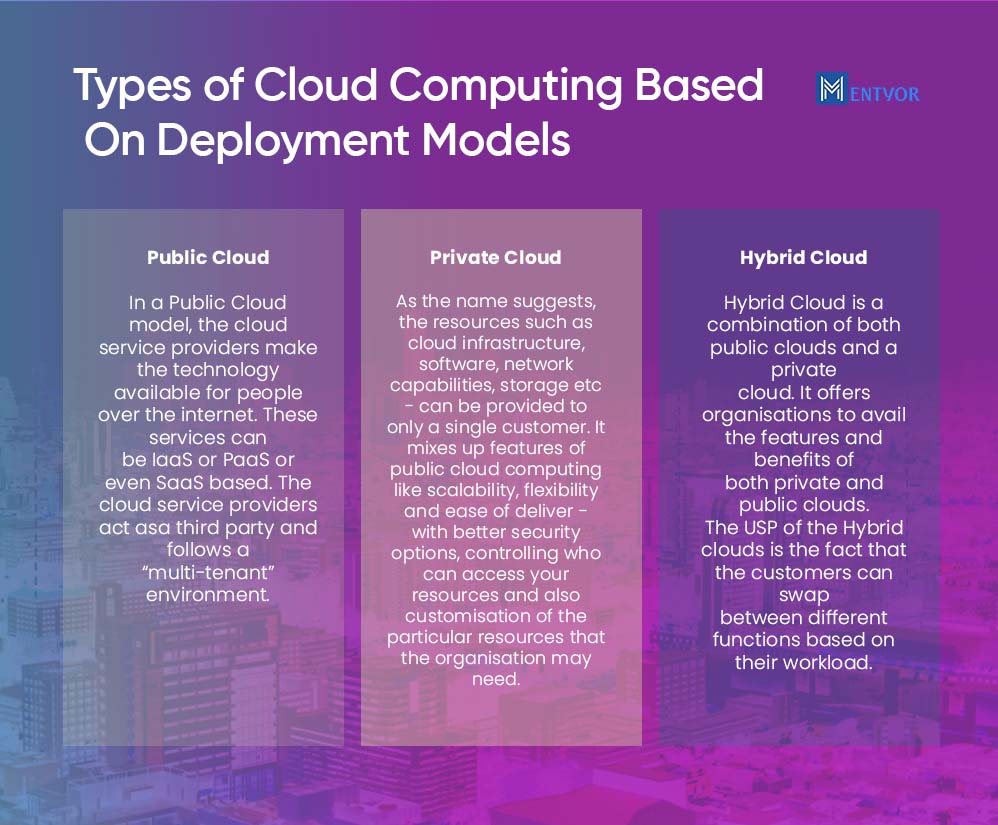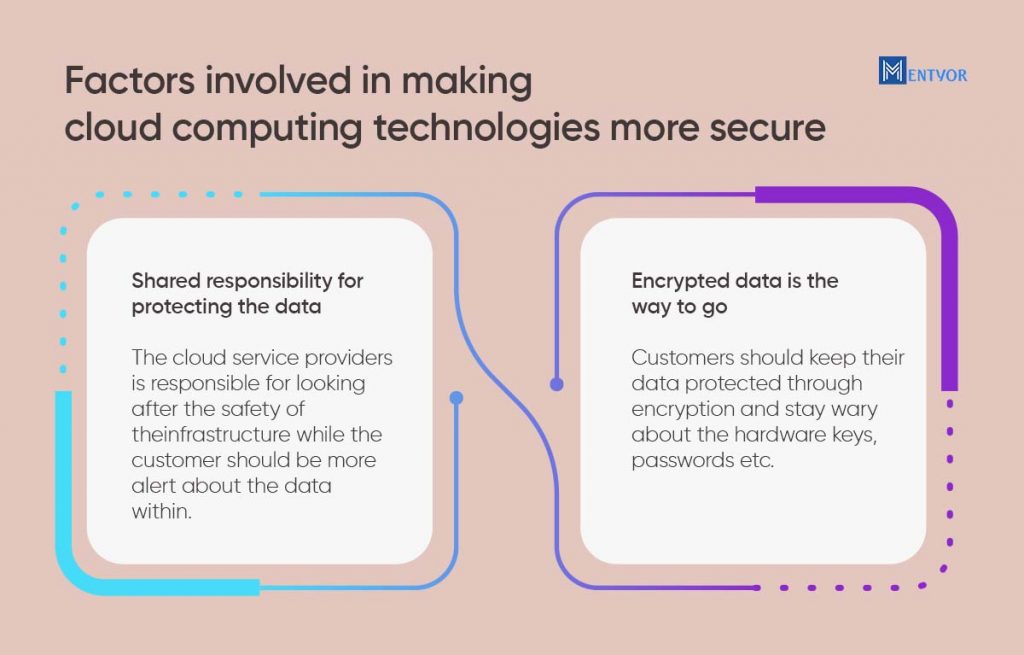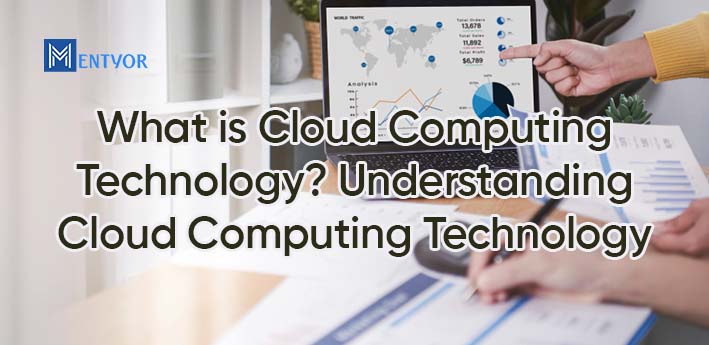Cloud Computing Technology can be simply defined as the software services provided over internet. These services include include providing servers, databases, storage space, intelligence etc, to a client, through a third-party format. Here the Internet in itself forms the “cloud” in Cloud services.
Before the inception of computers, data was stored in handwritten or typed formats on paper. With advancements in technology, data is now being stored in hard drives and different servers. But as the world shifts towards a digital landscape, the amount of data being generated every moment has also increased tremendously.
As such, the hard drives and servers alone cannot accommodate the needs of the growing industries and businesses. This is where cloud services come in.
In this article, we shall give you an overview of what is cloud computing technology, the types of computing technology and why is it important.
Also read: What Is Data Governance | Importance Implementation and 5 Principles
What is Cloud Computing Technology ?
Cloud computing services provide a better resolution to companies without them having to make hefty and expensive changes to their entire IT infrastructure. It offers IT services like storage, network, and some newer services even provide software like natural language processing and artificial intelligence. It is remote and companies do not even need stacks of in-house data servers and a huge team to maintain these said servers.
As the world continues to become highly digitzed by the day, the data that is being generated each passing day is seeing new heights. In fact the volume of data being generated worldwide, the “Big Data” as it is now known, was projected to touch a staggering amount of 79 Zettabytes. [1] This is even considered to be doubled by 2025.
Cloud computing technology has a pay-as-you-go model so you need not pay for services that you do not even need. It has a monthly subscription amount and an alternative which only bills you according to your usage.
Its the same as having a Netflix or Hulu subscription instead of spending money in renting movies or buying DVDs. In fact, Netflix itself makes use of cloud services to store its mammoth film library.
Importance of Cloud Computing Technology
The cloud services are managed by a cloud service provider. As data analytics becomes increasingly important for any organisation, Big Data is needed for these analytics to glean valuable insights. In such cases, Cloud Computing turns out to be a great alternative for taking data remotely and performing analytics on them and storing in a remote site as well.
As such, around $125 billion were spent in availing cloud infrastructure services by different companies. While around 89 billion US Dollars were used in maintaining the hardware and software aspects of places that keep the “cloud” or the data centers. [1]
This technology helps to create a business that is scalable. Cloud technologies provide solutions that are instantaneous in nature to issues faced by their customers. Instead of applying a complex and tedious update to the infrastructure, services can be provided by cloud technology in minutes. This increases the flexibility and efficacy of a business.
Like Cloud Computing, Know Data Science Applications: A Digital World: 12 Amazing Data Science Applications
Types of Cloud Services
Cloud computing technologies can be categorised based on their deployment models and also on their service models. Based on the service models, the three different models are IaaS, PaaS, and SaaS. Let’s read about them in detail

IaaS (Infrastructure as a Service)
As the name suggests, this category offers IT infrastructure in the form of servers, data centres, networks etc. It uses a pay-as-you-go model and offer access to all the servers used by the organisation and provide access to the root-level technology as well. It removes the need for installing data centres or racks of servers on-site.
This is the most preferred choice if a particular organisation wishes to build their way from the ground up. It includes virtual and physical servers, different networks and also storage option. Due to its pay-as-needed service, companies can avoid the hassle of upgrading to extra resources in case there of periodic spikes in sales or usage.
Since it provides companies with access to root-level of technology, the firms might need a technical team that is aware of how to navigate through this cloud service.
Examples are Amazon Web Services (AWS), Microsoft Azure etc.
SaaS (Software as a Service)
SaaS or Software as a service is the most popular category of cloud services. It is also known as cloud based software or cloud application. The customers can avail the cloud based services or applications through a web browser, a specific desktop network or even through an API that would connect the service to a mobile operating system.
Here the cloud service providers provide the end products directly and the consumers are not concerned with the hardware or the complexities behind the software.
It provides services such as file storage, file backup, web emails, etc. Their services only consist of software and do not provide any pieces of equipment as such. The also follow a pay-as-you-go model, so it ensures that you only pay for the services and resources that you use.
Apart from being cost-efficient, and scalable, It also ensures that in case your device crashes or malfunction, you wouldn’t lose all your data from your applications as they get stored in the cloud. It also allows their customers to use necessary updates or features added by the cloud service providers without needing to do a whole on-site update.
Most commercial software today use this cloud services. Thus, it is omnipresent and more widely available for enterprises ranging from Artificial Intelligence to other more industry focused software.
Examples are Dropbox, G Suite, Microsoft office 365 etc.
PaaS (Platform as a Service)
In PaaS or Platform as a service, organisations are provided with a pre-developed platform by the cloud service providers. The service providers offer resources and services like operating systems, middleware, servers, data storage, databases etc. It provides the customer with the opportunity for running, developing and managing applications without having to spend large amount of money, navigate through complex software or even the hassle of taking care of on-site equipment.
Organisations can use their codes and applications to build upon these platforms. These are mostly used for building cloud apps where the organisation can use the operating system as well as the programming language provided by the cloud service providers.
Providers offering IaaS also offer Platform as a service. One such example is that of Amazon Web Service Elastic beanstalk. Another example is that of Red Hat OpenShift which is built aroun Docker containers.
Data Governance Pivotal Role in Healthcare: Data Governance: Its Pivotal Role and Challenges In Healthcare Sector
Types of Cloud Computing Based On Deployment Models
Cloud computing technology can also be classified on the types of clouds they use.
These models are

Public Cloud
In a Public Cloud model, the cloud service providers make the technology available for people over the internet. These services can be IaaS or PaaS or even SaaS based. The service providers act as a third party and follows a “multi-tenant” environment. [2]
The hosts or the providers are responsible for the maintenance of the infrastructure, hardware, data centres etc. it is also supposed to supply the customers with a network bandwidth that is capable of providing high speed connectivity and rapid accessibility to all data and applications.
As it is a “multi-tenant” environment, the infrastructure provided by the cloud service providers, is share by many public cloud computers. Thus, the cloud providers have to ensure they have the capacity to hold so many “tenants” on their infrastructure. And that they also have enough spare capacity to allow consumers to scale up in case the need be.
Public clouds also follow a subscription model or a pay-as-you-go model. Some popular examples of the public cloud companies are – Amazon Web Services (AWS), Google Cloud Platform (GCP), Microsoft Azure, etc. The public cloud customers of these companies can be measured in millions.
Private Cloud
As the name suggests, the resources such as cloud infrastructure, software, network capabilities, storage etc – can be provided to only a single customer. It mixes up features of public cloud computing like scalability, flexibility and ease of deliver – with better security options, controlling who can access your resources and also customization of the particular resources that the organisation may need.
Usually, Private clouds build an infrastructure that is on-premise in the customer’s data center. But it can also be built on an off-site location at the cloud-service provider’s centres or infrastructure can be rented from them.
Private Cloud is preferred by some organisations over public clouds as it allows more freedom to regulate access to the resources. Some organisations may also need to store confidential data in the form of intellectual data, confidential documents, personally identifiable information, medical histories and bills, financial data and other sensitive information.
Hybrid Cloud
Hybrid Cloud is a combination of both public clouds and a private cloud. It offers organizations to avail the features and benefits of both private and public clouds.
The USP of the Hybrid clouds is the fact that the customers can swap between different functions based on their workload.
Suppose if the workload required the information to be stored in a more secure location where access can be regulated according to certain standards, then the organisation can swap to a private cloud. But if the workload is only temporary and can be stored in a more general way, then public cloud can also be an alternative.
Know Difference of Data Science and Data Analytics for Cloud Computing: Difference Between Data Science And Data Analytics: A Complete Breakdown
Data Security in Cloud Computing
Data security is one of the biggest concerns of many organisations. Data is indispensable and as such many organisations remain wary of shifting to an off-site cloud based data centre. However many studies have shown that most data-theft occur on-site.
A study conducted by McAfee, a security software provider service, has shown that 52% of companies experience better security off-site on cloud as compared to on-premises security. [3]
Many other factors are also involved in making cloud computing technologies more secure such as –

Shared responsibility for protecting the data
The cloud service providers is responsible for looking after the safety of the infrastructure while the customer should be more alert about the data within.
Encrypted data is the way to go
Customers should keep their data protected through encryption and stay wary about the hardware keys, passwords etc.
Conclusion
As the world becomes more digitized by the day, the format of storing data also needs to go through a makeover. As such cloud computing technologies rise to the need of the hour. Although cloud computing technology has its own set of benefits, many naysayers still do not trust in the security of cloud computing services. Recent attacks by cyber criminals also do nothing but add to the issues.
As with everything in this world, cloud computing technologies too have their own pros and cons. You cannot overlook the benefits that it provides from better speed and higher ROI to a more technologically inclined data storing method.
Frequently Asked Questions
- Which is the most popular cloud service provider?
Amazon web services (AWS) is the most popular cloud service provider.
- Is Google Drive a Cloud?
Yes, Google Drive is a cloud service with computing tools available online.
- What is the difference between IaaS, SaaS and PaaS? [4]
The key difference between them is that IaaS products offer organizations resources such as servers, storage etc. While PaaS offer organizations a platform where they could host and provide consumer-centric apps. SaaS offer services such as cloud storage tools and apps to both organizations and consumers directly.
- Which organisation uses cloud services?
Business Giants like Snapchat, Spotify and even Pinterest make use of cloud services like AWS. Netflix, one of the largest movie streaming platforms in the world, uses AWS to store the plethora of movies that it offers its consumers.
References
[1] Statista. (2022, February 7). Big data – Statistics & Facts.
[2] Vennam, S. (2021, September 16). Cloud Computing. IBM.
[3] New McAfee Report Finds Eighty-Seven Percent of Companies Experience Business Acceleration from Use of Cloud Services. (2019, June 18). Business Wire.
[4] Bernazzani, S. (2021, November 5). IaaS vs. PaaS vs. SaaS: Here’s What You Need to Know About Each.


 WhatsApp
WhatsApp